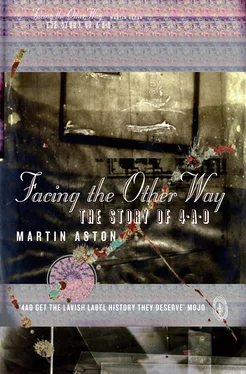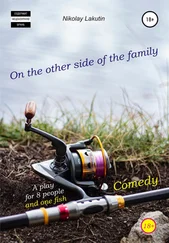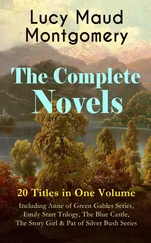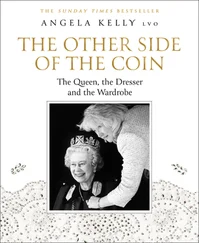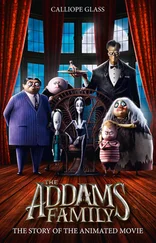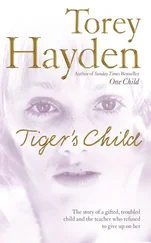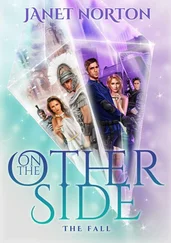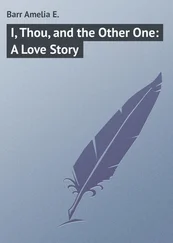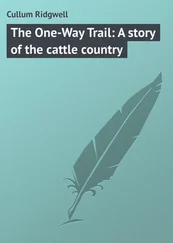The cover version, recorded in 1983, had been Ivo’s idea. The late Tim Buckley is his all-time favourite singer, and ‘Song To The Siren’ is still his all-time favourite song. ‘Not since Billie Holiday had recorded “Strange Fruit” was a song and lyric so suited to a voice as Tim Buckley’s was to “Song To The Siren”,’ he reckons.
By 1985, the inimitable Elizabeth Fraser had become his favourite living singer. And here was Lynch, requesting not just the music for Blue Velvet but Fraser and Guthrie to mime on stage in the prom scene. However, the lawyers for Buckley’s estate demanded $20,000 for the rights, scuppering Lynch’s plans (the film’s total budget was only $3 million). The director quickly turned to composer Angelo Badalamenti, who attempted to mirror the track’s displaced, eerie mood with a new song, ‘Mysteries Of Love’, sung by the American singer Julee Cruise with her own take on haunting, ethereal projection. Starting with Blue Velvet , and most famously on his TV series Twin Peaks , Lynch fashioned a world that appeared seamless, unruffled and presentable on the surface, but scarred and disturbed underneath, foaming with a barely controllable darkness. As Twin Peaks ’ FBI Special Agent Cooper declared, ‘I’m seeing something that was always hidden.’
In 2006, Ivo pointed to a similarity between label and director. ‘I feel that 4AD is like David Lynch,’ he told the Santa Fe Reporter . ‘If you say to somebody, “It’s kind of like a David Lynch movie”, you kind of know what you’re getting. It was like that in the same way for a certain period at 4AD: “It’s kind of like a 4AD record”. Actually, that probably meant it had loads of reverb.’
By this, Ivo wasn’t referring to something hidden – more that it was a brand that could be identified, where the term 4AD had become an adjective of sound. Yet in the music that the label was producing, there was the same sense of beauty as a mask for the true emotions coursing beneath. By 1985, the so-called ‘classic’ 4AD sound was all about dark dreams and hidden depths, performed by supposed fragile characters on the verge of anguish and breakdown. Take Elizabeth Fraser. After the drooling reception for her performance in ‘Song To The Siren’, she didn’t grow in confidence, but began to sing in what resembled a made-up language, or simply by enunciation, making it impossible to be understood. With a voice like hers, she didn’t need words; it was all there in her delivery, a shiver of emotion from agony to ecstasy.
March 2012. It’s been thirteen years since Ivo stood down from running 4AD and sold his 50 per cent share of the label back to his business partner Martin Mills, the head of the Beggars Banquet group of companies. But his legacy clearly lives on. The weekend edition of the Guardian has just published a feature on 4AD. ‘What is it about a record label that makes it the sort of place you want to spend time in?’ asks writer Richard Vine. ‘When it first emerged in the 1980s, 4AD felt like one of the most enigmatic worlds, the sort of label that you wanted to collect, that brought a sense of “brand loyalty” way before it occurred to anyone to talk about music in such crass terms.’
Vine cites Ivo as the reason, adding, ‘But arguably just as important to the label’s cohesion was designer Vaughan Oliver and photographer Nigel Grierson whose covers gave 4AD its distinct, haunted, painterly quality. It felt like you were peeking into a carnival full of beautiful freaks who didn’t want to be seen.’
So much of the music released on 4AD during Ivo’s era had this same creative tension, beauty masking secrets, feelings buried, persisting in anxious dreams and suppressed fear, hope and anger; lyrics that don’t explain emotion as much as cloud the issue, penned by a carnival full of beautiful freaks who didn’t want to be seen. Isn’t that what music does best, express feelings that words can’t articulate? Emotion that can’t be attached to a view or opinion, to a time or a place, is often the most timeless and precious.
People have long attached an obsessive importance to 4AD, and cited its enduring influence. On its own, This Mortal Coil’s ‘Song To The Siren’ drew extravagant praise. At the time, vocalists Annie Lennox (Eurythmics) and Simon Le Bon (Duran Duran) voted it their favourite single of the year. Today, Antony Hegarty (Antony and the Johnsons) calls it, ‘the best recording of the Eighties’. The song was to make an indelible impression. ‘For years, I was spellbound by the Julee Cruise catalogue but I didn’t know why,’ says Hegarty. ‘It was so beautiful and yet so horribly cryptic; there seemed to be something terrible lurking beneath the breathy sheen. Years later, I understood when I discovered that Lynch had originally wanted to license “Song To The Siren”.’
Irish singer Sinead O’Connor was just seventeen when her mother was killed in a car crash. ‘It was the record that got me through her death. In a country like Ireland where there was no such thing as therapy, self-expression or emotion, music was the only place you had to put anything. I played “Song To The Siren” nearly all day, every day, lying on the floor curled up in a ball, just bawling . I couldn’t understand the words much, but [Fraser’s] way of singing was the feeling I didn’t how to make. I still can’t move a muscle when I hear her sing it.’
July 2012. Ivo is driving from his New Mexico home in Lamy towards Santa Fe to an appointment with a new therapist, with Emmett sitting pillion; his black Newfoundland-Chow mix is the most eager of Ivo’s three dogs to go along for the ride, and Ivo loves his company anyway. Clouded memories of former sessions, in the inevitably elusive pursuit of happiness and to understand the nature of depression, persist as he passes through the jagged, barren landscape, the sun playing shadow games on the mounds of burrograss, the rust-coloured earth framed 360 degrees by the mountains. So much beauty and light. But inside his head, sadness and darkness.
On arrival, Ivo is pleasantly surprised when the therapist agrees Emmett can stay. ‘That’s the way to do therapy,’ Ivo reckons. ‘And Emmett loves our time together.’ But Ivo is not here to discuss Emmett, except in relation to how dogs have taught him to love unconditionally. ‘Something I have struggled to do with people,’ he says.
The black dog at his feet during the session has a special significance for Ivo. Depression is often known as ‘the black dog’, as British politician Winston Churchill famously labelled it. In 1974, towards the end of his young life, the British folk singer Nick Drake wrote ‘Black-Eyed Dog’ about the same subject. ‘A black-eyed dog he called at my door/ A black-eyed dog he called for more/ A black-eyed dog he knew my name …’
Andrew Solomon’s book The Noonday Demon: An Atlas of Depression summarised such depression: ‘You lose the ability to trust anyone, to be touched, to grieve. Eventually, you are simply absent from yourself.’
‘Try running a record company with two offices and over a dozen members of staff with countless artists looking to you for advice, guidance and financial support in that condition,’ says Ivo.
Up in the high desert of New Mexico, 7,000 feet above sea level and 18 miles outside of the state capital Santa Fe, the community of Lamy is comfortably off the beaten track. It was once a vital railroad junction: the Burlington Northern Santa Fe (BNSF) line – colloquially known as the ‘Santa Fe’ – was to stop in Santa Fe but the surrounding hills meant that Lamy was a more practical destination. But few people disembark here now. The restaurant (in what was the plush El Ortiz hotel) and tiny museum are outnumbered by the rusting, abandoned rail carts, memories of a more prestigious past. Not many people live here either: the 2010 census gave a population count of 218.
Читать дальше
